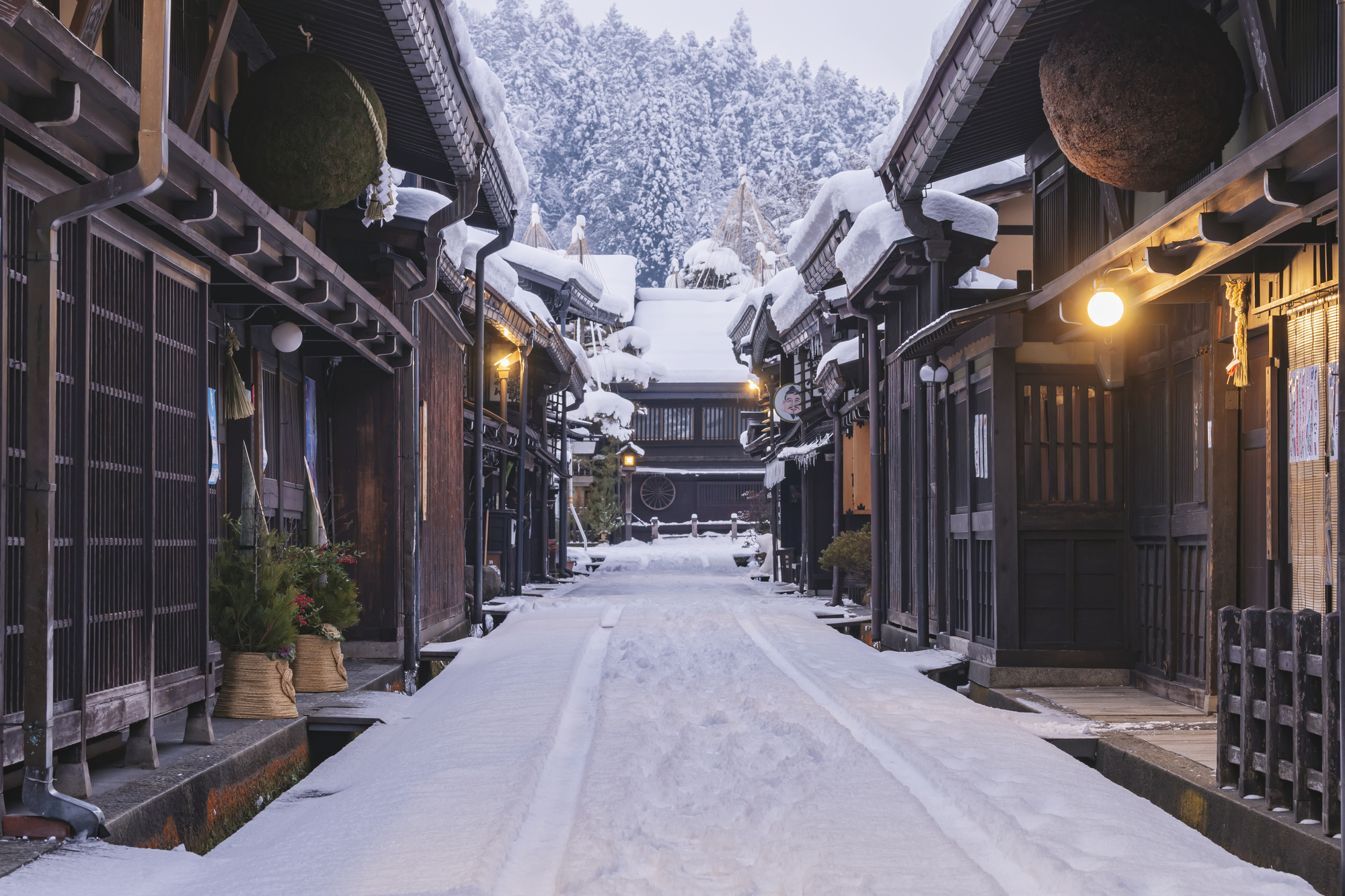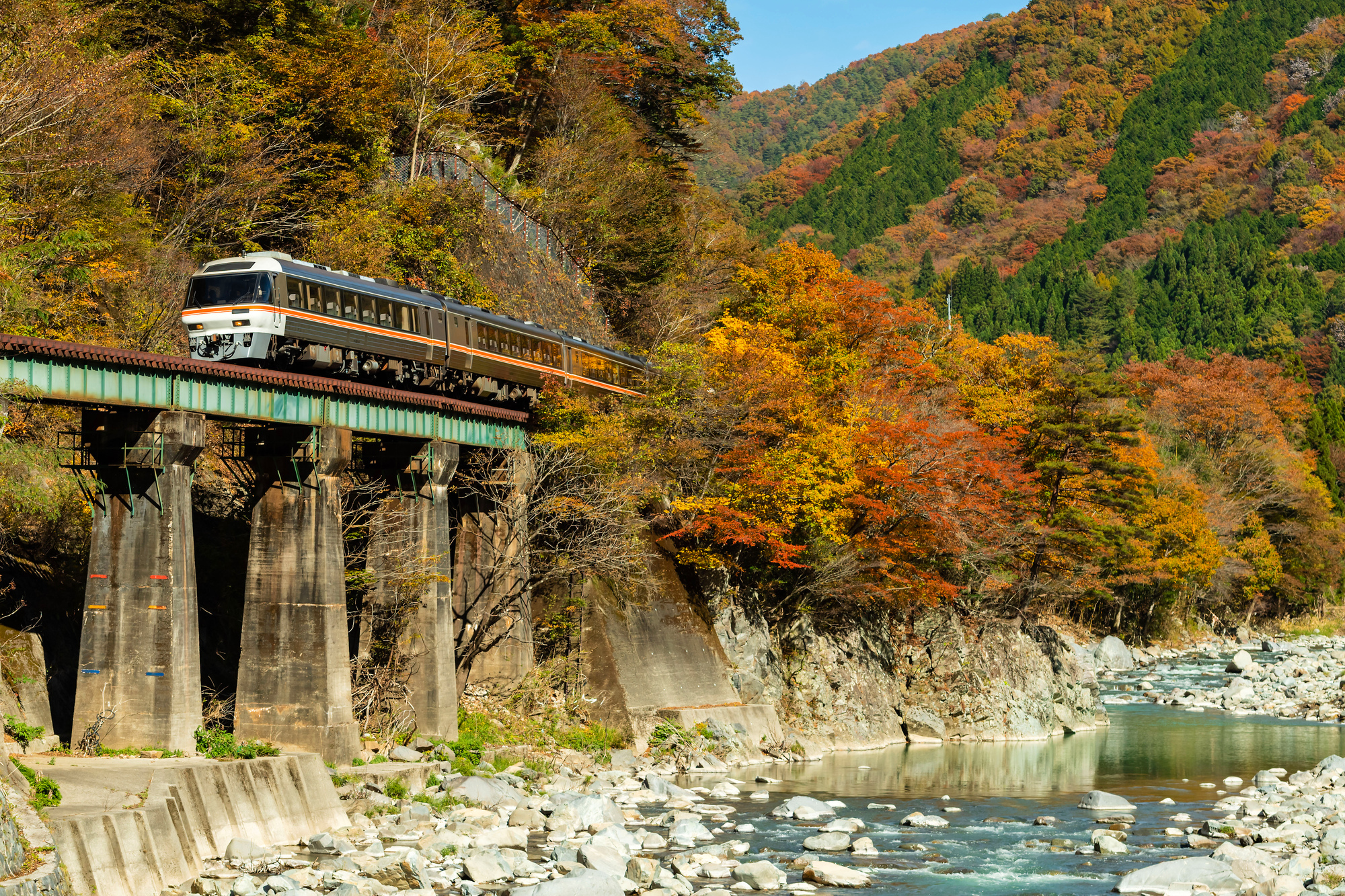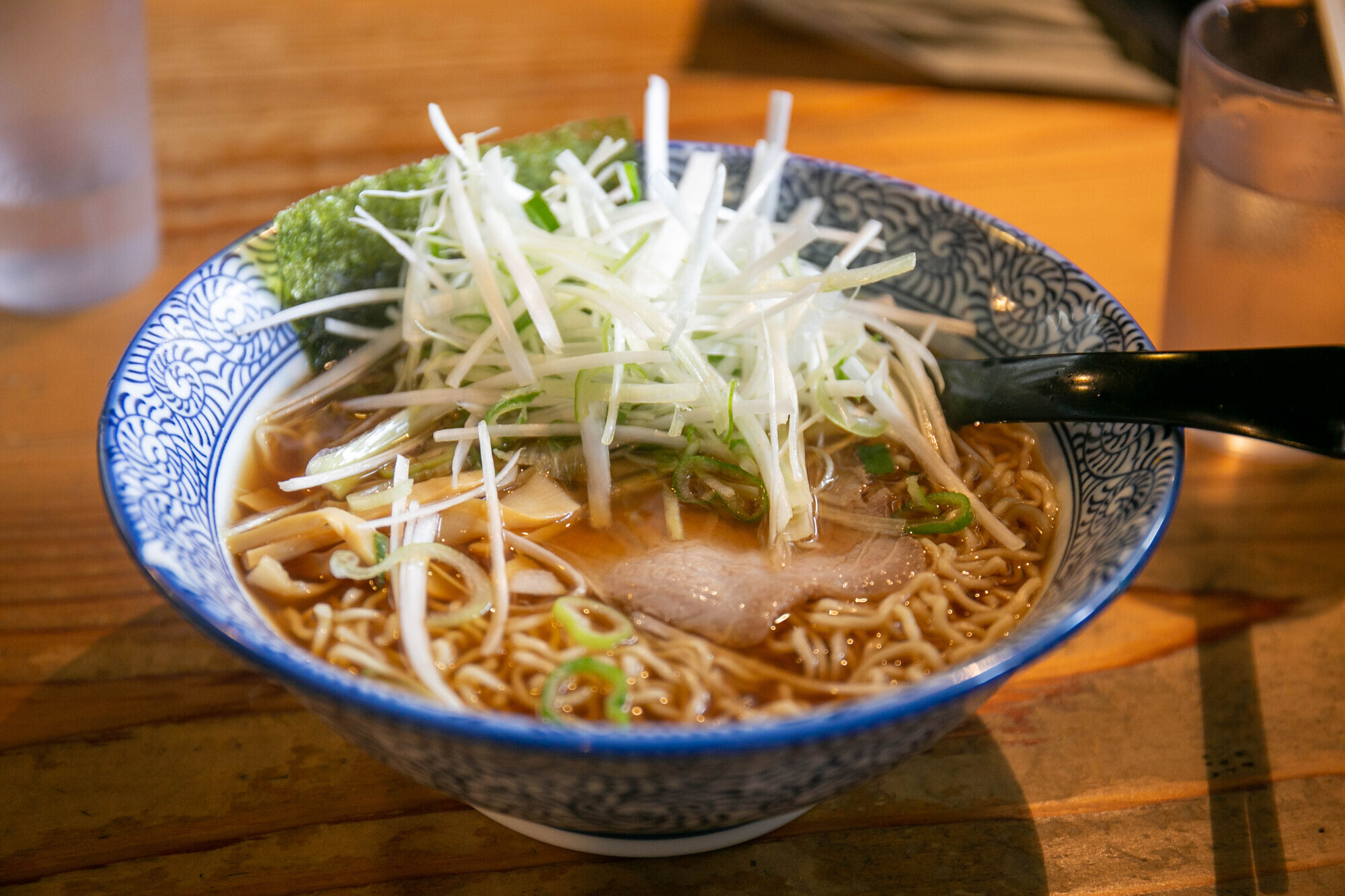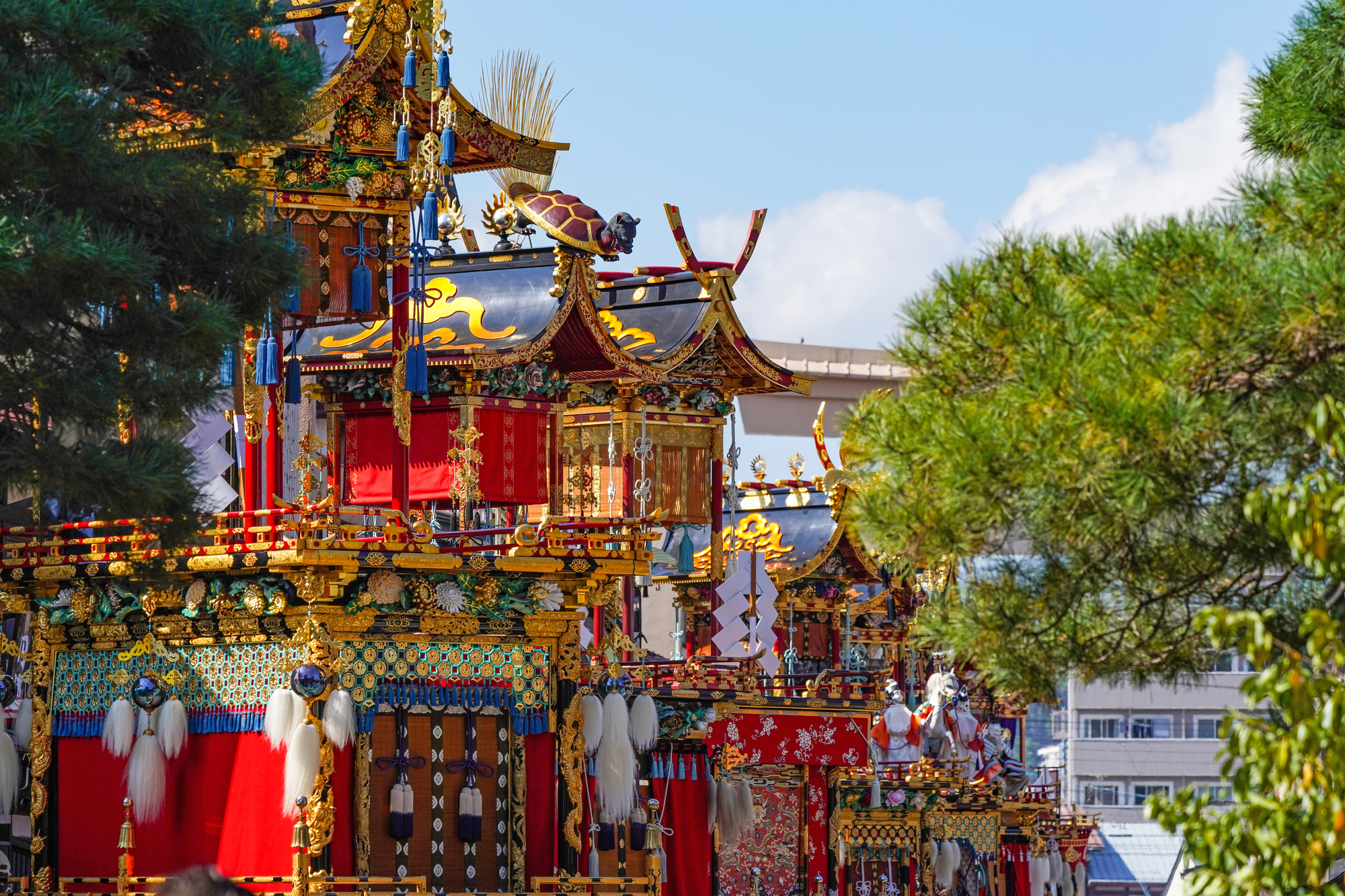Takayama Complete Guide
Manners to Observe in the "Little Kyoto of Hida"
Table of Contents
Welcome to the "Little Kyoto of Hida," a Gateway to the Edo Period

In a basin surrounded by deep mountains, a landscape as if time has stood still unfolds. The old townscape with its series of dark brown latticed bay windows, the sugidama (cedar ball) hanging under the eaves of a sake brewery, and the clattering sound of a rickshaw on the stone pavement. Takayama City in Gifu Prefecture is a place that retains the strong character of an Edo period castle town and merchant town, earning it the name "Little Kyoto of Hida."
A trip to Takayama is more than just sightseeing for beautiful photos. It's a cultural experience that satisfies all five senses: touching the architectural beauty that brings together the best of woodworking skills, feeling the passion of the townspeople in the magnificent festivals, and delighting your palate with the rich bounty of the mountains like Hida beef and Hoba Miso.
This guide is here to help you become a gracious visitor to this historic town. The charm of Takayama is that it is a "living town" where people still conduct their daily lives and businesses, setting it apart from a tourist theme park. The manners introduced here are the essence for respecting that daily life and making your own journey deeper and more authentic.
Now, as if passing through a noren (shop curtain), let's open the door to the Edo period with respect and curiosity in our hearts.
1.A Town of Hida Artisans and Merchants: The History Behind Takayama's Culture
Why was Takayama able to build such a rich and unique culture? The answer lies in the skills of its excellent artisans and the spirit of the merchants who supported them.
1-1. From Castle Town to Merchant Town: Why Did Takayama Become Prosperous?
During the Edo period, Takayama was the center of Hida Province and became a "tenryo," territory under the direct control of the shogunate, with the "Takayama Jinya" (historical government office) established here. It prospered thanks to the rich surrounding forest resources (especially timber) and mineral resources, attracting many merchants and becoming economically very wealthy. The Kanamori clan, the castle lords of the Sengoku period, designed the town in the image of Kyoto, which laid the foundation for its "Little Kyoto of Hida" title. Later, the merchants became the bearers of culture with their financial power.
1-2. The Takayama Festival, One of Japan's Three Most Beautiful Festivals: The Moving Yomeimon and the Pride of the Townspeople
The crystallization of Takayama's culture can be said to be the "Takayama Festival," held in spring and autumn. The autumn "Hachiman Festival," in particular, features a procession of over a dozen ornate floats called "Yatai." These floats are known for their splendor, earning them the nickname "moving Yomeimon gates," and for the dedication of intricate karakuri (mechanical) puppets. They are designated as National Important Tangible and Intangible Folk Cultural Properties. Owning and maintaining these floats is the pride of the merchants ("machishu") of each district and a symbol of their wealth and aesthetic sense.
1-3. The Tradition of "Hida no Takumi": A Townscape Breathing with Woodworking Skills
Since ancient times, the woodworkers of the Hida region, known as "Hida no Takumi" (Artisans of Hida), have contributed their outstanding skills to the construction of the capital and other projects. This tradition still breathes in the townscape of Takayama. The precise joinery and beautiful latticed windows of the old houses are a showcase of the artisans' skills. The festival floats are also a culmination of the skills of Hida artisans, including sculpture, lacquering, and metalwork.
1-4. [2025 Update] Evolving Traditional Experiences and Efforts towards Sustainable Tourism
While preserving its traditional townscape, Takayama is enhancing its hands-on content for tourists to experience its culture more deeply. Popular activities include making "Sarubobo," a local folk doll, crafting small items using washi paper, and the "Sakagura Meguri" (sake brewery tour) event in winter. To avoid tourist concentration, guided tours that introduce the charms of areas outside the city center and initiatives to promote the use of public transportation are also being implemented.
2.Preparations & Basic Info: Traveling Comfortably in the Mountainous Old Capital
As Takayama is located in a mountainous region, preparation according to the season is key to a comfortable journey.
2-1. Complete Access Guide from Nagoya and Toyama

- Limited Express Train (Recommended):
From Nagoya: Take the JR Takayama Main Line Limited Express "Hida" directly to Takayama Station (approx. 2 hours 40 mins). You can also enjoy the beautiful valley scenery from the train window. - From Toyama: Take the JR Takayama Main Line Limited Express "Hida" to Takayama Station (approx. 1 hour 30 mins). Good access from the Hokuriku Shinkansen as well.
- Express Bus: Many express buses run to Takayama from major cities such as Nagoya, Tokyo, Osaka, and Kanazawa, and they are relatively affordable.
2-2. Getting Around Takayama: Exploring the Old Town on Foot and by Rental Cycle
2-3. Autumn Festival and Winter Snowscape: Seasonal Attire and Tips
- Autumn (October-November): The autumn Takayama Festival (Oct 9-10) is a major highlight. The autumn colors in the old town are also beautiful. Days are comfortable, but mornings and evenings are chilly, so a jacket or sweater is necessary.
- Winter (December-February): Snow falls and the old town turns into a beautiful world like an ink painting. Temperatures often drop below freezing, so a down jacket, hat, gloves, and non-slip winter shoes are essential.
3.[Crucial] Respecting the Lives of the Townspeople: 6 Manners to Keep in Takayama
The townscape of Takayama coexists with the lives of the people who live there. Let's be mindful of respectful behavior.
3-1. In the Old Town: Quiet Consideration for the Houses that are Cultural Properties
The houses in the old town, known as "Sanmachi," are cultural properties as well as private residences and shops. Do not lean against or touch the walls or latticed windows without reason. It's a quiet area where you can hear the sounds of daily life. Please refrain from loud conversations. Cultural Context: The "Noren" curtain indicating the boundary between hospitality and privacy. The "noren" (curtain) hung at the entrance of a shop is a sign of welcome, indicating that it is "open for business," but it also marks the boundary to a private space beyond. It is good manners not to peek behind the noren without permission. |
3-2. Street Food Etiquette: Eat on the Spot, Don't Walk and Eat
Takayama has many attractive street foods, such as Hida beef sushi and mitarashi dango (sweet soy-glazed rice dumplings). However, eating while walking is dangerous as you might bump into others and stain their clothes. The manner is to eat the food in front of the shop where you bought it or in a designated eating area. Cultural Context: Japanese "Ogyogi" (good manners) and the idea of eating in public spaces. In Japan, eating while walking in public is traditionally considered "ogyogi ga warui" (bad manners). The underlying idea is that meals should be eaten while standing still and in a calm manner. |
3-3. At the Morning Markets: Manners for a Visitor in the Locals' Daily Life
The Miyagawa and Jinya-mae Morning Markets are visited not only by tourists but also by local people for their daily shopping. Be careful not to block the narrow aisles, and avoid touching products excessively before buying. Chatting with the vendors is one of the joys of the market. Start with a smiling greeting. Cultural Context: The two faces of the morning market: "business" and "wellside gossip". A morning market is a place of "business" for buying and selling goods, but it is also a place for "idobata-kaigi" (community gathering) where local people meet. It's important to have the humble feeling of being a brief guest in their daily circle. |
3-4. At the Takayama Festival: Respect for the Giant Floats and Manners in Crowds
The festival floats (Yatai) are the treasures of each district and also objects of worship. Never touch the intricate carvings and decorations. The festival is extremely crowded. Avoid pushing or saving spots, and enjoy it with a spirit of mutual concession. Cultural Context: The sanctity of a festival ("hare" space) and community pride. Japanese festivals are sacred "hare" (special occasion) events to welcome the gods. The floats are considered "yorishiro," vessels where the gods reside. Showing respect for the floats is the same as showing respect for the town's faith and pride. |
3-5. At Sake Breweries: Tasting is a Communication with Gratitude
Takayama has many historic sake breweries, and in winter, you can enjoy tasting new sake. The tasting is offered out of the brewer's goodwill. Express your gratitude and enjoy it in moderation. If you find a sake you like, buying it is the best way to support the brewer. Cultural Context: Respect for the makers and the profound world of sake. Sake brewing is the crystallization of the experience, intuition, and passion of the brewers known as "Toji." Pondering the effort and story behind a single sip is the secret to a deeper appreciation of sake. |
3-6. Photography Manners: Beautiful Memories Without Inconvenience
Every corner of the historic town is picturesque. However, be careful not to get so absorbed in taking photos that you obstruct the passage of other tourists or are unaware of traffic. When photographing private houses or people, be mindful of privacy. Cultural Context: The culture of "reading the air" and unseen consideration for others. "Kuuki wo yomu" (reading the air) means to understand the unspoken feelings and situation from the atmosphere and act accordingly. Even at the best photo spot, if people are waiting behind you, it is considerate to move on quickly. |
4-1. Area-Specific Strolls: Sanmachi Suji, Takayama Jinya, and Higashiyama Walking Course
- Sanmachi Suji: The heart of the "old town." Lined with souvenir shops, cafes, and sake breweries, it's the most bustling area.
- Takayama Jinya: The only remaining historical government office from the Edo period in Japan in its near-original form. You can get a glimpse into the life of officials of that time.
- Higashiyama Walking Course: A quiet walking path lined with temples. Recommended for those who want to see another face of Takayama, away from the tourist crowds.
4-2. Savoring Hida Delicacies: Hida Beef, Hoba Miso, and Takayama Ramen

4-3. Touching the Artisans' Skills: Sarubobo Making and Winter Sake Brewery Tours
Making your own "Sarubobo," a protective amulet doll from the Hida region, is a great souvenir of your trip. Blessed with a cold climate and pure water, Takayama is also a famous sake-producing area. Every winter (mid-January to February), a "Sakagura Meguri" event is held, where breweries open to the public on a weekly rotation for new sake tasting.
5.Planning Your Trip: Model Itineraries of History and Gastronomy
5-1. [Day Trip] By Limited Express! A Takayama Highlights Course
- Morning: Arrive at Takayama Station. Stroll through the Miyagawa Morning Market.
- Noon: Enjoy street food in the old town, like Hida beef sushi and mitarashi dango.
- Afternoon: Visit the Takayama Jinya. Stroll through Sanmachi Suji for souvenir shopping.
- Evening: Head back on the Limited Express "Hida".
5-2. [1 Night, 2 Days] Staying in the Old Town! A Classic Course to Savor the Morning Market and Hida Beef
- Day 1:
〇Afternoon: Arrive at Takayama Station. Check into an inn in the old town.
〇Until evening: Stroll through Sanmachi Suji and enjoy sake tasting at a brewery.
〇Night: Indulge in a Hida beef dinner at a city restaurant.
- Day 2:
〇Morning: Wake up early to visit both the Miyagawa and Jinya-mae Morning Markets.
〇Forenoon: Visit the Takayama Festival Floats Exhibition Hall to see the magnificent floats.
〇Noon: Have Takayama Ramen for lunch.
〇Afternoon: Look for souvenirs around the station before heading home.
The "Spirit of the Townspeople" to Take Home with You

When you finish your trip to Takayama, you should have something warm left in you, along with the beautiful scenery of the town. Isn't it the "spirit of the townspeople" (machishu no kokoroiki) who have protected and passed down the magnificent festival floats with their own hands and warmly welcomed visitors?
By observing manners, respecting history, and enjoying interaction with the local people in this town, you are not just a tourist but a visitor who respects the town's culture, touching upon that very spirit. Please take home a piece of that spirit as the best souvenir of your journey.

